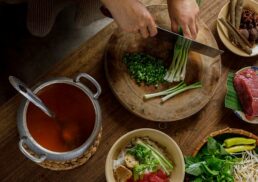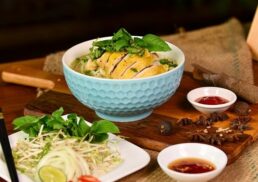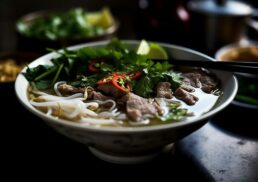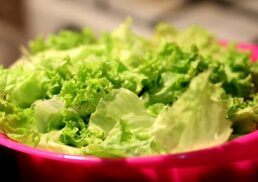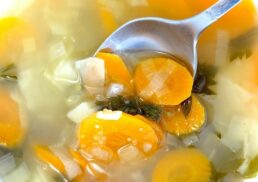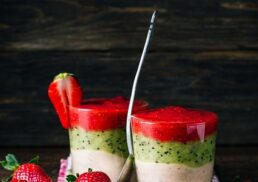Have you ever experienced the delight of biting into a deliciously crispy, golden-brown dish, only to wonder what magical ingredient created such a mouthwatering texture? The secret is revealed: breadcrumbs panko! These versatile, light, and airy crumbs can elevate your culinary creations to new heights. In this comprehensive guide, we will explore the unique origin and characteristics of panko, how to make homemade breadcrumbs panko, alternative options like gluten-free and flavored panko, as well as versatile uses for these amazing breadcrumbs.
Get ready to embark on a breadcrumb journey that will change the way you cook forever! From classic dishes to creative applications, breadcrumbs panko offer endless possibilities for adding that perfect crunch to your favorite meals. Let’s dive in and discover the world of panko!
Table of Contents
Key Takeaways
Experience the unique texture and crunch of Panko breadcrumbs, a popular choice for chefs and home cooks around the world!
Get ready to get creative in the kitchen with homemade panko bread crumbs – it’s an exciting adventure!
Discover amazing flavors, textures, and uses of Panko for your culinary creations & be prepared to make the best choice between regular or panko breadcrumbs.
Understanding Panko: What Makes It Unique
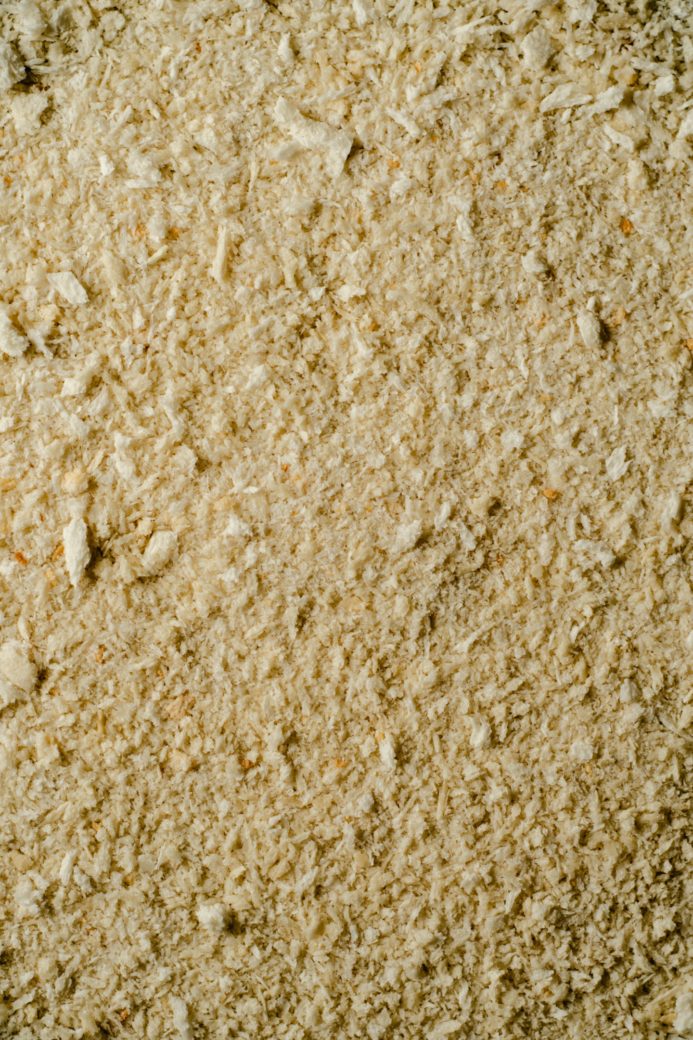
Panko breadcrumbs, also known as panko crumbs, originate from Japan and boast a unique set of characteristics that set them apart from ordinary breadcrumbs. With their lighter, airier texture and ability to stay crispy longer, panko breadcrumbs have become a popular choice for chefs and home cooks alike. But what makes panko so special, and how does it differ from regular breadcrumbs?
Unraveling the magic of panko requires delving into its origins, characteristics, and culinary uses. From the Japanese influence to its specially baked crustless bread, panko’s journey from loaf to crispy coating is a fascinating one. Now, let’s delve into the reasons why panko is the preferred choice for a plethora of dishes.
The Origin of Panko
The story of panko breadcrumbs begins in Japan, where the word “panko” is derived from the Portuguese word “pan” (meaning bread) and the Japanese suffix “-ko”. Panko was developed in Japan after European bread-making techniques were introduced in the mid-19th century, resulting in the creation of this unique type of bread.
Traditionally, panko is made from crustless white bread that is cooked using an electrical current in a specially designed oven, yielding a very dry, baked loaf of bread. This bread is then shredded into larger flakes than regular breadcrumbs, giving panko its distinct light and airy texture.
From humble beginnings, panko brown has become a cherished ingredient in Japanese cuisine and beyond, offering a delightful crunch to a variety of dishes.
Characteristics of Panko
When comparing panko to regular breadcrumbs, the most notable difference is in their texture. Panko has a lighter and airier texture, making it perfect for dishes that require a satisfying crunch without the heaviness of ordinary breadcrumbs. The larger flakes of panko also absorb less oil, allowing foods to stay crispier for a longer time.
In addition to its unique texture, panko offers other benefits when used in cooking. Unlike regular breadcrumbs, panko goes beyond crisp and almost crackles like puffed rice, making it the ideal choice for dishes such as chicken katsu. With its versatility and delightful crunch, panko has become an indispensable ingredient in modern cooking.
Cooking with Panko
Panko breadcrumbs truly shine when used in a variety of dishes, from classic recipes to creative experiments. Whether you’re baking, frying, or simply adding a crunchy topping, panko can elevate your culinary creations to new heights.
Some mouthwatering dishes that showcase the magic of panko breadcrumbs include:
Tonkatsu
Chicken Kiev
Panko Crusted Mashed Potato Cakes
Crispy Panko Chicken Breasts
Scotch Eggs
Pumpkin Lobster Mac and Cheese
With such a wide range of applications, panko breadcrumbs are the perfect addition to any chef’s pantry.
Creating Homemade Panko Bread Crumbs
While store-bought panko breadcrumbs are conveniently available, making your own homemade panko is an exciting and rewarding endeavor. Imagine the satisfaction of creating that perfect crunch from your very own kitchen!
So, how do you make your own panko breadcrumbs? The process begins with choosing the right bread, preparing it, and processing it through baking to achieve the desired texture. With a few simple steps, you can create the best homemade panko to enhance your favorite dishes. Let’s explore these steps in detail.
Choosing the Right Bread
The first step in making homemade panko breadcrumbs is selecting the right type of bread. While any white bread can be used, it is recommended to avoid whole wheat bread as it may alter the texture and flavor of the final product. Some sources suggest that Wonder Bread is a great option for homemade panko as it provides the desired light and airy texture.
Initiating the process with the ideal bread lays the groundwork for impeccable homemade panko breadcrumbs. So choose wisely and be prepared to enjoy a delightful crunch in your culinary creations.
Preparing Bread for Panko
Once you have selected the perfect bread, it’s time to prepare it for your homemade panko breadcrumbs. Begin by removing the crusts from the bread slices and shredding the crustless bread using a food processor. If you don’t have a food processor, you can also grate the bread by hand or pulse it in a blender until it reaches the desired texture.
With your ordinary bread crumbs transformed into regular bread crumbs as coarse crumbs, you are inching closer to creating your homemade panko breadcrumbs. The next step involves baking the cracker crumbs to achieve that irresistible crispy texture.
Processing and Baking
To bake your homemade panko breadcrumbs, follow these steps:
Preheat your oven to 350°F (150°C).
Spread the shredded bread crumbs onto a baking sheet lined with parchment paper.
Bake the crumbs for 5 to 7 minutes, ensuring they do not brown during the process.
Once the breadcrumbs are baked, allow them to cool completely before using or storing them.
Kudos! You’ve triumphantly produced your homemade panko breadcrumbs. With these delightful crumbs at your disposal, you’re ready to create a multitude of delicious, crispy dishes.
Alternative Panko Options
While traditional panko breadcrumbs are an excellent choice for many dishes, there are alternative options available to cater to different dietary needs and preferences. From gluten-free panko to flavored varieties, these alternatives offer exciting ways to enhance your culinary creations.
Whether you’re looking to accommodate dietary restrictions or simply want to experiment with new flavors, alternative panko options provide a versatile and delicious solution. Let’s delve further into these intriguing alternatives.
Gluten-Free Panko
For those with gluten sensitivities or celiac disease, gluten-free panko breadcrumbs are a fantastic alternative to traditional panko made from wheat flour. Made from gluten-free ingredients such as rice flour, tapioca starch, and potato starch, these breadcrumbs provide the same satisfying crunch without the gluten found in regular gluten free bread.
Gluten-free panko can be used in a multitude of dishes, just like traditional panko. From fried chicken and fish to topping salads or casseroles, gluten-free panko offers a delicious and accommodating option for those with gluten sensitivities.
Flavored Panko
Flavored panko breadcrumbs offer a fun and exciting twist on traditional panko. With varieties such as garlic, onion, and herb, these flavored breadcrumbs can add an extra layer of flavor and complexity to your dishes.
Making flavored panko is as simple as combining your desired seasonings with panko breadcrumbs and baking them as you would with traditional panko. From spiced panko bread crumbs with thyme, basil, ginger, and chile heat to Italian bread crumbs with oregano, basil, sage, rosemary, thyme, savory, and marjoram, the possibilities are endless. Get creative and let your taste buds guide you!
Versatile Uses for Panko Bread Crumbs
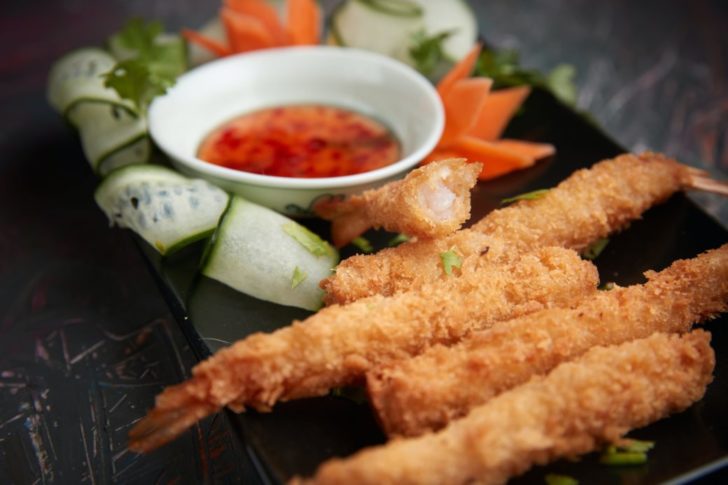
Panko breadcrumbs offer a world of possibilities when it comes to enhancing the texture and flavor of your favorite dishes. From classic recipes to creative applications, panko can be used in a variety of ways to create mouthwatering meals that will impress your friends and family.
Whether you’re looking to add a delightful crunch to a classic dish or experimenting with new and inventive ways to use panko, these versatile breadcrumbs are sure to become a staple in your kitchen. Let’s investigate the myriad ways panko breadcrumbs can be utilized in your culinary masterpieces.
Classic Dishes
Panko breadcrumbs are a popular choice for many classic dishes, such as fish and chips, chicken parmesan, and macaroni and cheese. Their light and crispy texture makes them ideal for creating a delicious golden crust on these dishes, while their neutral flavor allows them to blend seamlessly with other ingredients.
In addition to these classic dishes, panko breadcrumbs can also be used in recipes like:
Tonkatsu
Chicken Kiev
Panko Crusted Mashed Potato Cakes
Crispy Panko Chicken Breasts
Scotch Eggs
Pumpkin Lobster Mac and Cheese
With such a wide range of dishes, panko breadcrumbs offer a versatile ingredient for any chef’s pantry.
Creative Applications
Beyond classic dishes, panko breadcrumbs provide numerous creative applications in the kitchen. For instance, panko can be used as a crunchy topping for salads, adding a satisfying contrast in texture to leafy greens. Panko breadcrumbs can also be used to top casseroles, macaroni and cheese, and other baked dishes, providing a delightful contrast between the soft interior and crunchy exterior.
Additionally, panko can be used as a coating for fried foods, such as chicken, fish, or vegetables, adding a crunchy texture and flavor that is simply irresistible. With so many creative ways to use panko breadcrumbs, the possibilities in your kitchen are endless.
Panko vs. Regular Breadcrumbs: When to Use Each
While panko breadcrumbs offer numerous advantages over regular breadcrumbs, it’s essential to understand the differences between the two and when to use each type. Comparing panko and regular breadcrumbs can help you determine the best choice for your recipes and how to substitute one for the other when needed.
Scrutinizing the textures, flavors, and uses of both panko and regular breadcrumbs will arm you with the knowledge to select the most suitable breadcrumbs for your dishes. Let’s juxtapose these two varieties of breadcrumbs and determine the appropriate circumstances for each.
Learn more, visit The Real Difference Between Panko And Regular Bread Crumbs.
Comparing Textures and Flavors
The most significant difference between panko and regular breadcrumbs lies in their textures. Panko breadcrumbs have a light, airy, and delicate texture, making them especially great for fried foods. In terms of flavor, panko breadcrumbs are neutral and do not have a strong taste, allowing them to be used in a variety of dishes without overpowering other ingredients.
Regular breadcrumbs, on the other hand, can be made from different types of bread and crusts, and are processed into a finer crumb. They tend to have a denser texture and a more pronounced flavor compared to panko breadcrumbs. Understanding these differences can help you choose the right breadcrumbs for your dish.
Substituting Panko for Regular Breadcrumbs
When substituting panko for regular breadcrumbs or vice versa, it’s essential to consider the differences in texture and flavor. Generally, you can substitute one for the other using the same amount, as both types of breadcrumbs can be used interchangeably. However, it’s important to remember that panko breadcrumbs will provide a lighter and crunchier texture compared to regular breadcrumbs.
When experimenting with substitutions, be mindful of the desired outcome for your dish. If you’re seeking a subtle crunch, regular breadcrumbs may be the better choice, while panko breadcrumbs are ideal for dishes that require a satisfying, crispy texture. By understanding when to use each type of breadcrumbs, you can create delicious and successful dishes every time.
Storing and Buying Panko Bread Crumbs
For optimal quality and freshness in your culinary endeavors, appropriate storage of homemade panko breadcrumbs and knowledge about where to buy commercial panko is key. By taking the time to store your breadcrumbs correctly, you can enjoy their delightful crunch in a variety of dishes.
Whether you’re making your own homemade panko or purchasing store-bought options, understanding the best methods for storage and buying will help you get the most out of these versatile crumbs. Let’s delve into the proper storage and purchasing methods for panko breadcrumbs.
Storing Homemade Panko
To store your homemade panko breadcrumbs:
Let them cool completely before placing them in an airtight container.
Store the containers in a dry place, such as a pantry or cupboard.
They can be stored for up to two weeks at room temperature.
If you’re looking to extend the shelf life of your homemade panko, you can also freeze them in an airtight container for up to four months. By storing your homemade panko breadcrumbs properly, you can enjoy their crispy texture and delicious flavor in a variety of dishes whenever the mood strikes.
Purchasing Store-Bought Panko
When purchasing store-bought panko breadcrumbs, you can find them at grocery stores with an international aisle, such as Safeway or Trader Joe’s. You can also purchase the Kikkoman panko bread crumbs package at Walmart, which weighs an impressive 8oz.
Store-bought panko is available in a variety of flavors, such as plain, garlic, and Italian, catering to your taste preferences and culinary needs. With store-bought panko at your disposal, you’re ready to create a multitude of delicious, crispy dishes in no time.
Summary
In this comprehensive guide, we have explored the wonderful world of panko breadcrumbs, from their unique origin and characteristics to making your own homemade panko and using alternative options like gluten-free and flavored panko. Panko breadcrumbs offer a versatile and delightful crunch to a variety of classic dishes and creative applications, making them an indispensable ingredient in any kitchen.
Now that you know all about panko breadcrumbs and their many uses, it’s time to get creative in the kitchen! Whether you’re experimenting with new recipes or adding a crispy twist to your favorite dishes, panko breadcrumbs are sure to become a beloved staple in your culinary endeavors. Happy cooking!
Frequently Asked Questions
What is the main ingredient needed to make homemade panko bread crumbs?
White bread is the key ingredient for homemade panko bread crumbs, so grab a loaf and get cooking!
Panko bread crumbs are a great way to add crunch and flavor to any dish. They are easy to make at home with just a few simple ingredients. All you need is white bread and some white bread.
Can panko and regular breadcrumbs be used interchangeably?
Yes, panko and regular breadcrumbs can be used interchangeably – no need to choose one over the other!
How long does store-bought panko last?
Enjoy the delicious crunch of store-bought panko for up to a full year!
Panko is a versatile ingredient that can be used in a variety of dishes. It’s light and crunchy texture makes it a great addition to any meal. Plus, it’s free.
What are some creative applications for panko breadcrumbs?
Discover the unique texture and flavor of panko breadcrumbs today! Use them to create crunchy toppings for salads, coat fried foods, add a delicious crunch to meatloaf or crab cakes, and make an irresistible crust for your baked dishes.
How can I store homemade panko?
Wow! You can store homemade panko for up to two weeks at room temperature or four months in the freezer – just make sure it’s in an airtight container!
You can keep your panko fresh for a long time with the right storage methods. Store it.
